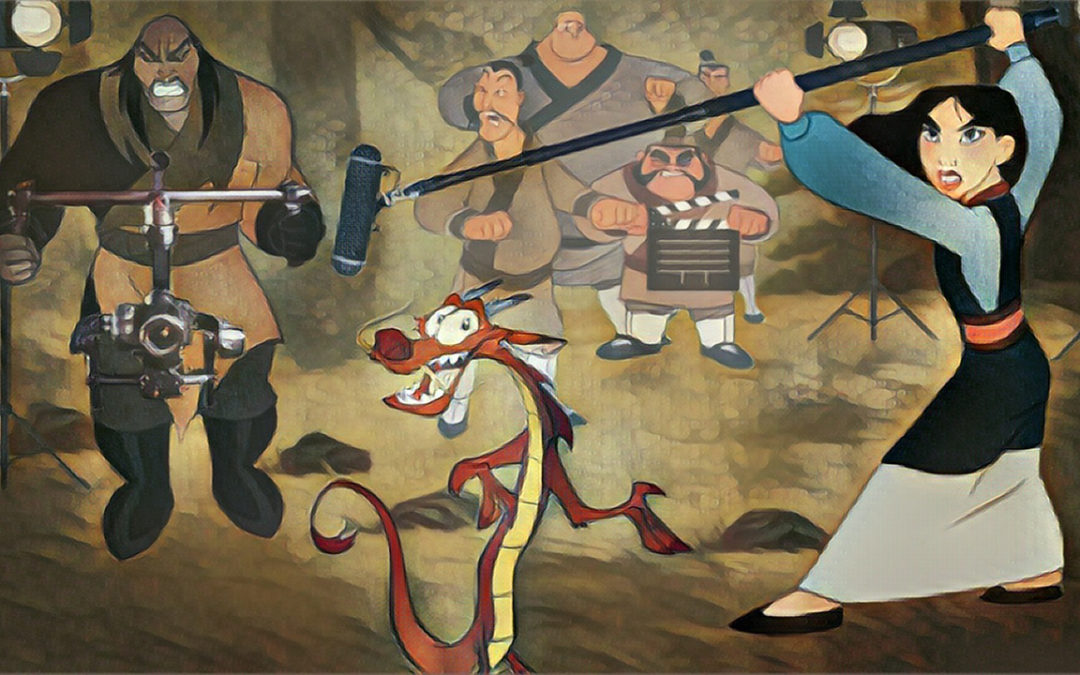The term “Renaissance” has been used by fans to describe the awakening and reinvention that brought public and critical interest to Disney Feature Animation in the 1990’s, starting with 1989’s The Little Mermaid and ending with 1999’s Tarzan. No matter what aspect of the filmmaking process, you’ll find a brilliant example of it in every one of the Renaissance Disney films.
We’ve already covered Aladdin and The Lion King. Now let’s ponder the cinematic genius of 1998’s Mulan!
1. Be bold!
Mulan focuses on the themes of misogyny, sexism, and subverting the norm. At every turn, Mulan is fighting against her country’s tradition, the expectations of her family, and the mindsets of individuals who have had a very specific idea of what a woman’s role is in the world.
In 1998, this was a bold move and badly needed, considering some heroines up to this point have had some…problematic moments. Jasmine (Aladdin), Cinderella (Cinderella), and Aurora (Sleeping Beauty) are very much placed in “damsel in distress” situations, without agency or much of a plan. Most of the heroines’ lives are altered when a man enters the picture romantically, but in Mulan, she embarks on her journey for herself. Oh, not to mention, she isn’t even a princess!
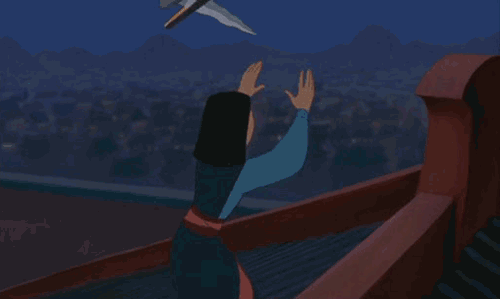
And the bold move paid off! Mulan was lauded for breaking new ground in Disney films and started a trend of strong female characters like Tiana (The Princess and the Frog), Merida (Brave), and Moana (Moana).
Representation is important! As artists we have a responsibility to tell all sorts of stories. Entertainment is always the goal, but don’t be afraid to make a statement as well. The same goes for hiring your crew—be sure to recruit a diverse cast of characters behind as well as in front of the camera!
2. Reframing magic
In Aladdin, magic is the driving plot device—the story wouldn’t happen if Aladdin didn’t have Genie’s help, and in order to keep Aladdin challenged the writers must give Genie’s powers several rules and restrictions. Mulan demonstrates a very different way to incorporate magic while maintaining conflict and keeping the story character-driven. While magical elements like Mulan’s “guardian” Mushu exists, she must face her challenges on her own. (In fact, Mushu’s arc is that he’s actually totally useless as a magical guardian!)
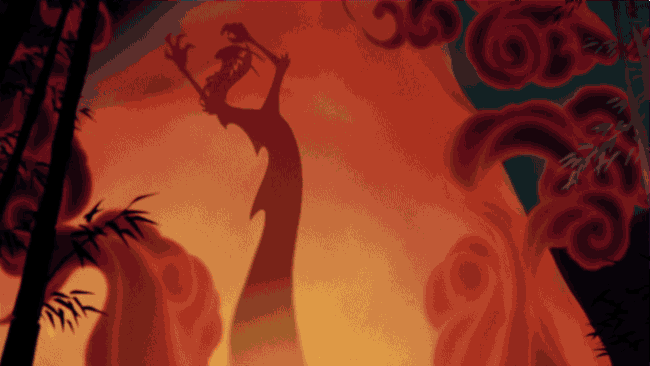
Mulan is a perfect example of how you can tell a story that takes place in a magical (or sci-fi / fantasy / superhero) world without becoming reliant on that magic. The writers introduce fantastic elements, like the spirit of Mulan’s ancestors and her enchanted guardian, to build the world and provide comic relief. But Mulan must still use her wit, passion, and willpower to overcome obstacles and achieve her goals. This makes for a more well-rounded, relatable character and more satisfying story.
High-concept elements like magic work best as the seasoning, not the steak!
3. The power of the montage
Mulan features several montage sequences that help to push time forward while also advancing the story. The montage, defined as “the production of a rapid succession of images in a motion picture to illustrate an association of ideas,” is a tool to develop character and story without hurting pace.
Many musical sequences in Renaissance Disney films could be described as montage, but Mulan has one of the most famous ones: the fan favorite, “I’ll Make A Man Out Of You.”
It compresses months of military training into three minutes, highlighting important character moments for Mulan along the way. In the span of a single song Mulan questions her abilities, gets kicked out of training camp, tests herself one last time, and proves herself worthy.
Another powerful example is when Mulan decides to take her father’s place in the army. In a short sequence enhanced by epic music we see quick shots of her leaving a meaningful hair clip (representative of her intended place and femininity), opening the cabinet that houses her father’s armor, slicing off her hair, appearing in the stables and calming her horse, then bursting through the main gates and riding off toward her destiny. The editing really punctuates each important choice she makes.
Some may joke about the 80’s montage, but it is still an important tool in the filmmaker’s pocket that doesn’t have to come off as cheesy. One way Mulan avoids the cheese factor is with carefully crafted graphic-matches and by cutting on motion. How did they achieve this? Storyboards! The montage was planned carefully in pre-production so it would flow effortlessly, as opposed to being an after-thought.
4. Balance drama with humor
On paper, the synopsis for Mulan doesn’t scream animated musical:
To save her father from death in the army, a young maiden secretly goes in his place and becomes one of China’s greatest heroines in the process.
So how do you turn such a serious topic into a fun viewing experience? By carefully offsetting the darker, more dramatic moments with scenes of humor and levity.
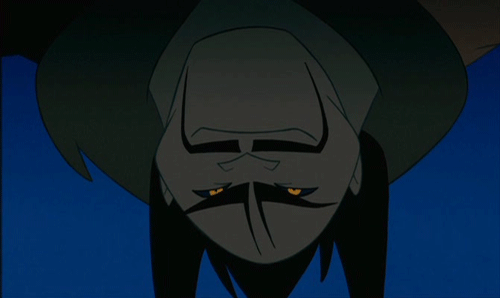
The very first scene in the film is the frightening appearance of big baddie Shan-Yu (inspired by Atilla the Hun) at the Great Wall of China, making some pretty serious threats. Opening with the threat allows us to understand what’s at stake, and to take the story seriously.
In contrast, Mulan’s introduction takes a lighter note, establishing her likability through the use of humor. She’s a bumbling homemaker-in-training, which is endearing to the audience, but also central to her character arc. After getting to know her, seeing her fail, and understanding the consequences of the choice she is about to make to take her father’s place, the seriousness sets in once again.
This back-and-forth creates a tonal balance that continues throughout the film. The occasional humor does not diminish the importance of what’s at stake, and the seriousness of what’s at stake does not detract from the joy of the story.
5. Location, location, location
Characters come to life in the spaces they inhabit, and should therefore interact with that space. Allowing your characters to interact with their location turns the set from a pretty backdrop into a living, breathing world. Mulan features several great moments of interaction between the characters and their environment, but the climax in the Imperial City stands out.
In this very set-oriented action sequence, Mulan must fight to get through the crowds, climb the walls, balance on the rooftops, and swing around the architectural columns. She uses the firework storage area to set off an explosion, and finally escapes by zip-lining down a string of Chinese lanterns. This demonstrates Mulan’s quick decision-making, but also gives a more tangible picture of what ancient China was like.
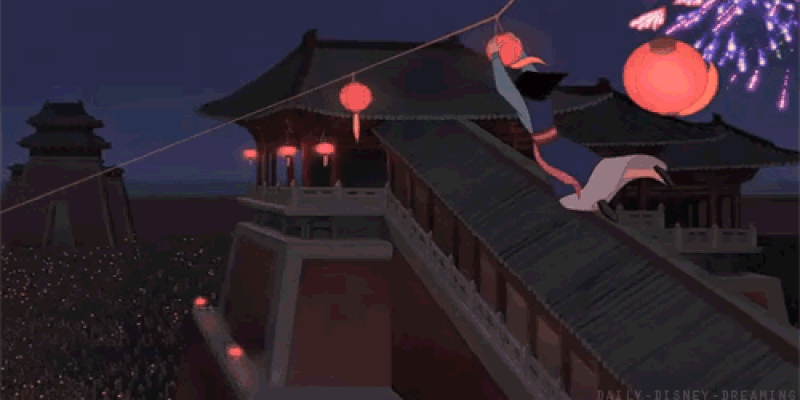
Always be on the lookout for interesting ways to incorporate the environment into your scenes, making them more real to the audience (and the performers).
And we’re not just talking about action sequences. Even if you are staging a dialogue scene between two characters in a modern kitchen, use what you have at your disposal to give the scene more energy and realism. Maybe a draft comes through the window and blows some papers everywhere. Does your character panic and begin to pick them up, or shrug and plan to do it later? Do they close the window right away, or just hope that the wind will start to behave? Your location is an important tool in bringing out and building character!

